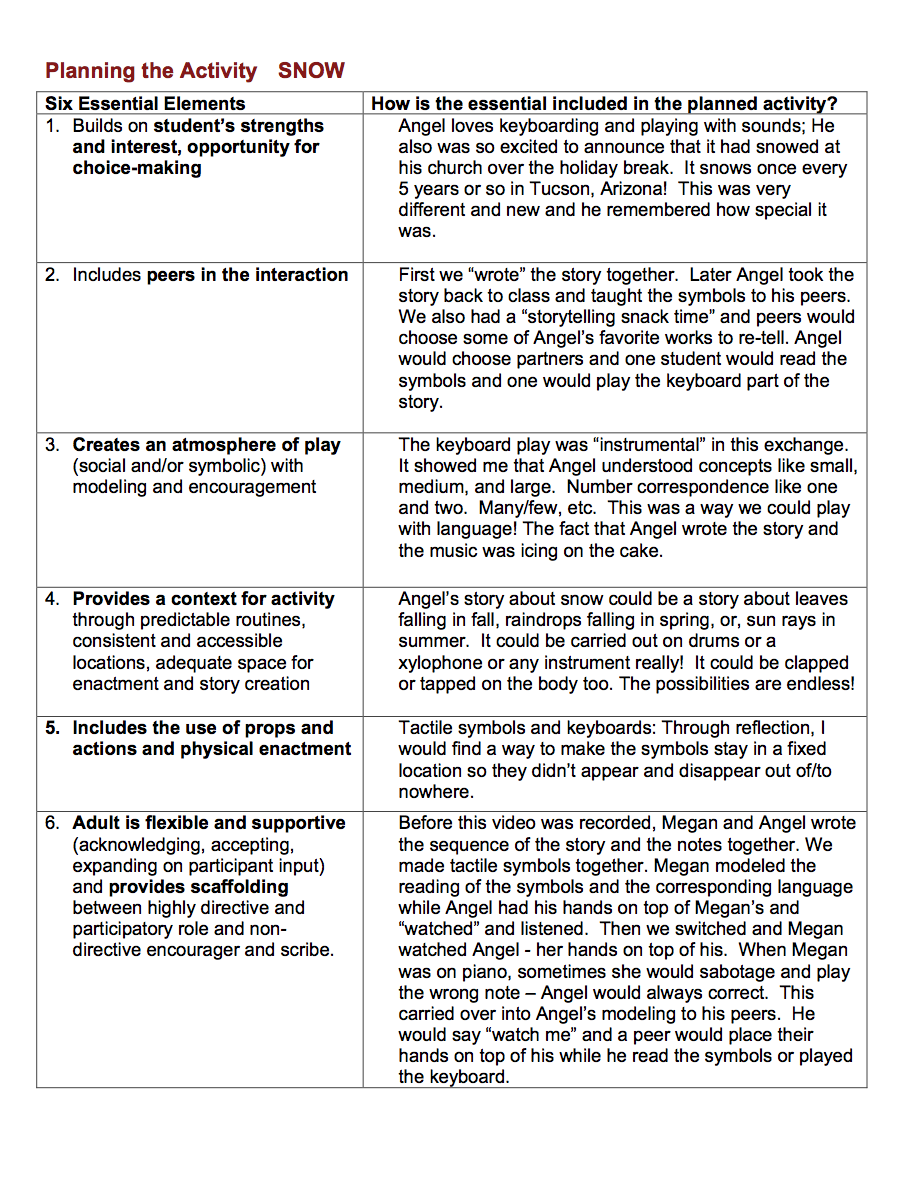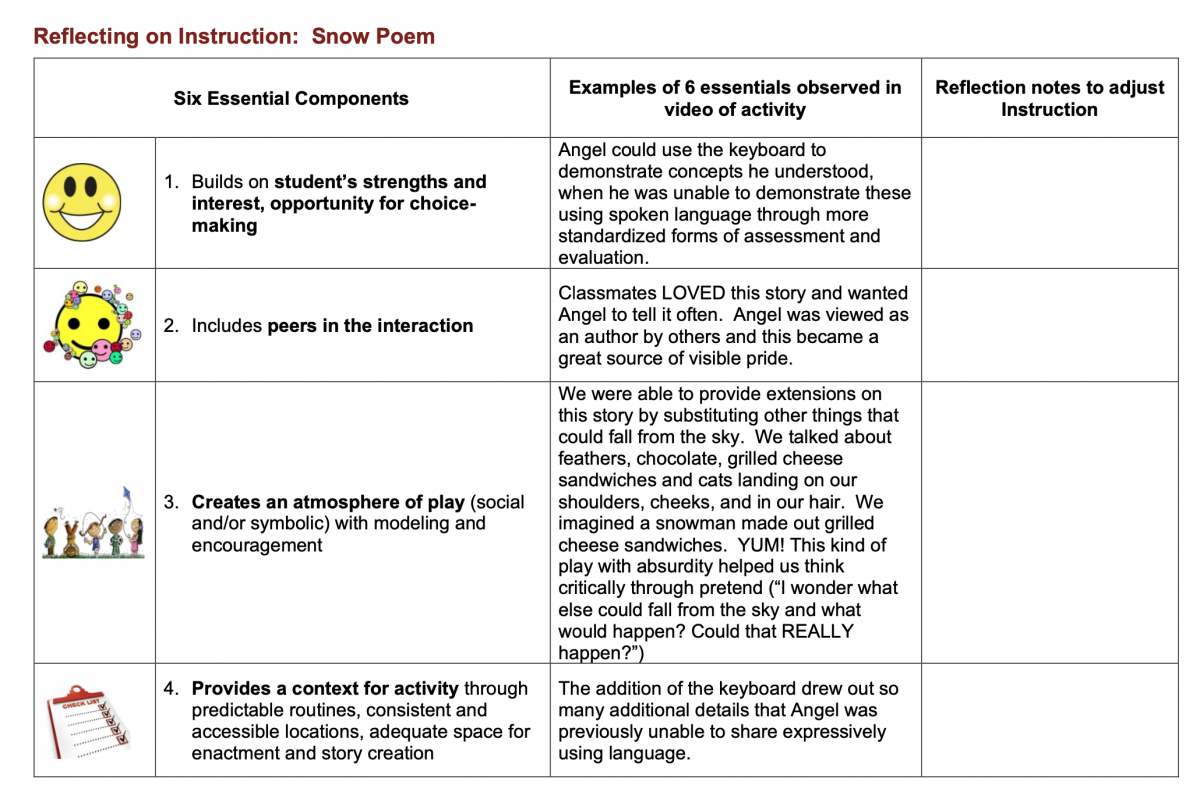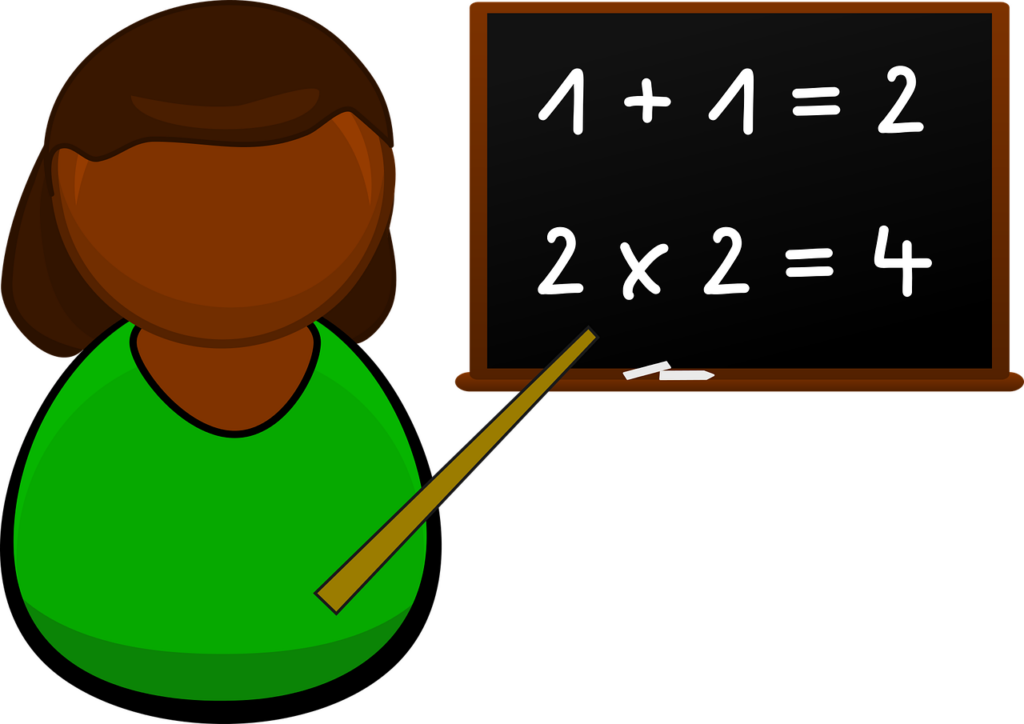By Megan Mogan
Angel uses tactile symbols to prompt him to recite his poem about snow. He uses the keyboard to accompany his poem.
Background
Angel is a 10-year-old student who is blind. His name is pronounced “AHN-hel.” His home language is Spanish, but all of his education has been in English. He uses spoken English to communicate expressively. He is profoundly deaf in one ear. Angel is primarily a tactile learner and uses his auditory channel to support his tactile skills. He has prostheses in place of his eyes. Angel is a gifted musician and loves piano keyboards. He loves talking about his family and his church. He also enjoys recording devices and anything that “beeps.”
Goals
- Read tactile symbols as representations of whole sentences
- Correspond features of tactile symbols with size and number concepts
- Correspond size and number concepts with keys on a piano
- Develop imagination through pretend play
- Allow Angel to practice and master the roles of reader, writer, and illustrator (through his piano)
Planning the Activity
Story
Once upon a time, I went to church and a snowflake fell on my shoulder (one note played) . Another snowflake fell on my nose (note). Two snowflakes fell on my cheeks (two notes at the same time). Lot’s of snow fell in my hair (many different single notes at different times). Then it snowed all around (many different single notes at different times). Some kids built a snowman. First they rolled a big ball of snow (notes played from right to left on the keyboard). Next they rolled a medium ball of snow (notes played from right to approximately middle-c on keyboard). Last they rolled a little ball of snow (notes played from right, just slightly down the keyboard). I said “hello” to the snowman (Angel pretended keys on keyboard were keys on a brailler and typed “h e l l o.”). I felt happy when it snowed. Here is the snowfall (many random notes played across the keyboard. The end.





